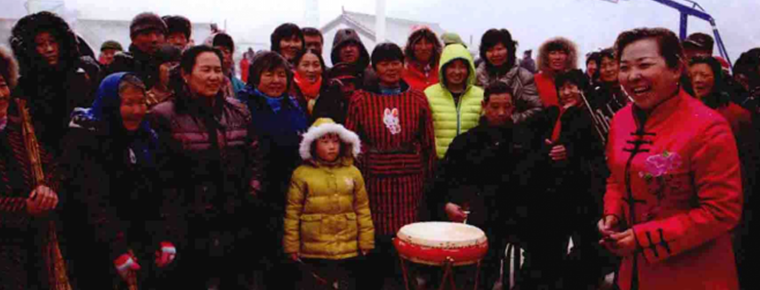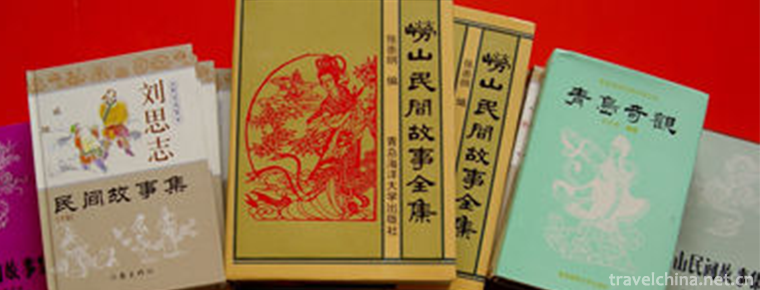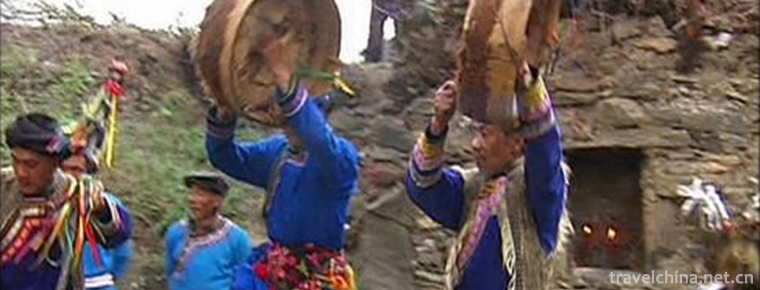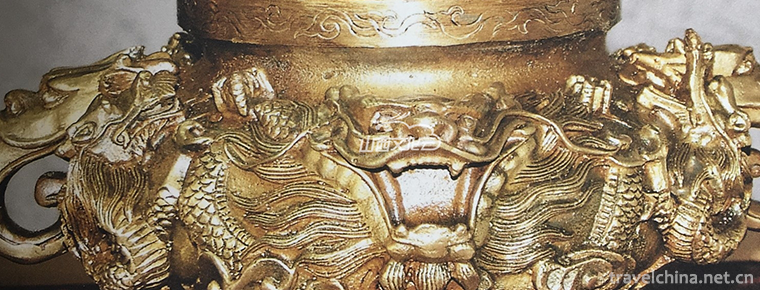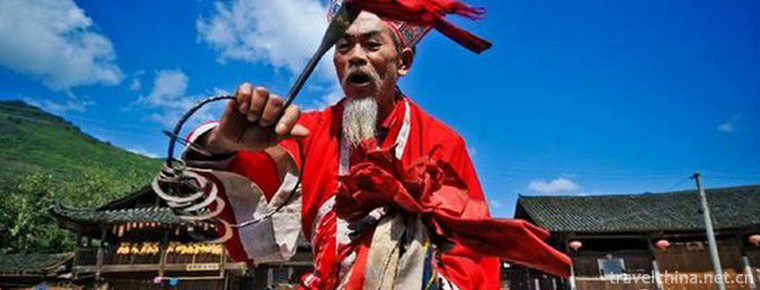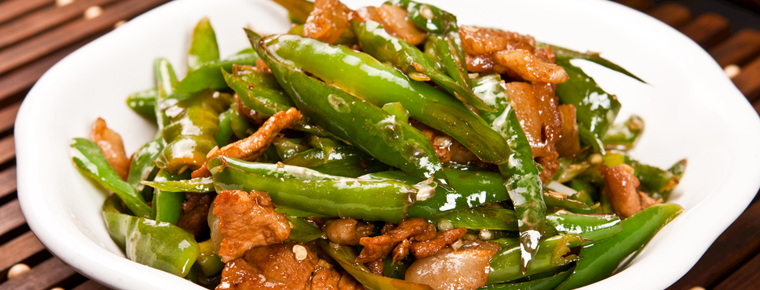Mongolian Folk Songs
Mongolian Folk Songs
Mongolian folk songs are mainly divided into two categories: ritual songs and pastoral songs. Mongolian folk songs are famous for their magnificent voices and melodious tunes. It is rich in content, including describing love and marrying women, eulogizing horses, grasslands, mountains and rivers, and eulogizing grassland heroes, etc. These folk songs reflect Mongolian customs and customs. On June 7, 2008, Mongolian folk songs were listed in the second batch of national intangible cultural heritage list with the approval of the State Council.
Basic introduction
Mongolian long-tune folk song is a unique singing form with distinct nomadic culture and regional cultural characteristics. It describes the Mongolian people's perception of history, culture, human customs, morality, philosophy and art in grassland people's unique language.
Mongolian master of long-tune art La Surong introduced that in Mongolian, long-tune is called "Uri Tudao", meaning long song, which is relatively short song, besides long-term tune, there is also a long history. According to textual research, long-tune folk songs have existed during the formation of the Mongolian nationality, which has a history of thousands of years.
The long tone is a free translation of the Mongolian word "Uritingduo". "Uridin" means "long-term" and "eternal" and "Duo" means "song". In related works and papers, they are also literally translated into "Long Song", "Long Tune Song" or "Grassland Pastoral Song". "Mongolian long tune folk song" is a form of Mongolian folk song, Mongolian folk song is divided into long tune and short tune. During the formation of the Mongolian people, the long-tune folk songs already existed, and the lack of words and long tunes was one of their major characteristics.
According to the historical origin of Mongolian music culture and the present situation of its musical form, the long tune can be defined as a folk song created by the nomadic people in the northern grassland in the production of animal husbandry and sung in the field grazing and traditional festivals. Generally, the two lyrics are upper and lower. The singers play the long tune lyrics according to the accumulation of life and the perception of nature, and the rhythm of the long tune lyrics is different. Most of them are about grasslands, horses, camels, cattle and sheep, blue sky, white clouds, rivers and lakes.
Long tune melody is long and soothing, artistic conception is open, voice is many words, breath is long, the melody is very decorative (such as front, back, sliding, echo, etc.), especially the Chinese-coloured singing method formed by the way of "Nogura" (Mongolian phonetic translation, twists or decorations) singing is the most distinctive.
At the same time, Mongolian long-tune folk songs are also a cross-border distribution of culture, China's Inner Mongolia Autonomous Region and Mongolia are the main cultural distribution areas of Mongolian long-tune folk songs. The success of the joint application between China and Mongolia is enough to show the immeasurable artistic and worldwide value of Mongolian long-tune folk songs as a cultural heritage.
On November 25, 2005, UNESCO announced the third batch of "representative works of oral and intangible heritage of mankind" at its headquarters in Paris. China declared "Uygur Mukam Art of Xinjiang, China" and "Mongolian Long-tune Folk Song" jointly declared by China and Mongolia ranked in the list. "Mongolian Long-tune Folk Song" is the first project jointly declared by China and foreign countries to UNESCO on the same intangible cultural heritage.
During the formation of the Mongolian people, the long-tune folk songs already existed. Mongolian long-tune folk songs are closely related to grasslands and Mongolian nomadic life style. They carry the history of the Mongolian nation and represent the production, life and spiritual character of the Mongolian nation. Mongolian long-tune folk songs are also a cross-border distribution of culture. Inner Mongolia Autonomous Region of China and Mongolia are the main cultural districts of Mongolian long-tune folk songs.
Mongolian long-tune Mongolian is called "Uri Tudao", which means long song. It is characterized by fewer words, long-lasting, soothing and free, suitable for narration, and longer lyric. The lyrics are generally two sentences, the content of which is mostly describing grasslands, horses, camels, cattle and sheep, blue sky, white clouds, rivers, lakes and so on.
Mongolian long tune, with its distinctive nomadic cultural characteristics and unique singing form, tells Mongolian people's perception of history, culture, human customs, morality, philosophy and art, so it is called "the living fossil of grassland music".
China and Mongolia have jointly declared "Mongolian long-tune folk songs" as "representative works of human oral and intangible heritage". In the next 10 years, the two countries will cooperate in the protection of Mongolian long-tune folk songs, coordinate and take protective measures to do better.
Although China and Mongolia have done their best to protect it according to their own reality, and achieved some results, the overall decline trend of long-tune folk songs has not been fundamentally curbed. The partial, segmented or scattered protection of long-tune folk songs is far from being able to cope with the challenges and shocks they face.
China has proposed to join forces with Mongolia to declare Mongolian long-tune folk songs as "representative works of human oral and intangible heritage". The Mongolian government responded positively to the suggestions of China. In nearly a year, China and Mongolia have carried out a series of communication, consultation, inspection and joint text production at different levels on the joint declaration. Finally, they have completed the heavy and tense declaration work within the time stipulated by the United Nations. Sun Jiazheng said that in the future, the two countries will conduct close and effective joint action in the field investigation, research, protection methods and protection measures of Mongolian long-tune folk songs.
In May 2006, Mongolian long-tune folk songs were included in the list of the first batch of intangible cultural heritage in China.
On October 24, 2007, China's first lunar orbiting satellite, Chang'e-1, carried more than 30 songs into space, one of which was the Mongolian long-tune folk song "Rich and Wide Alxa".
historical origin
Mongolian people have their own language. Mongolian has three dialects: Inner Mongolia, Weilat and Balhu Britt. The common characters were created by the Uighur alphabet in the early thirteenth century. At the beginning of the thirteenth century, the original characters were reformed by Mongolian scholar Chgi Oursl, and became the universal and standardized Mongolian language up to now.
Mongols love singing, men, women, young and old. They respect singers and those who are good at singing. Mongolian folk songs are mainly divided into two categories: ritual songs and pastoral songs. Etiquette songs are used in wedding banquets and other festive occasions. The main contents are singing pure love, singing heroes and singing horse-racing riders who win the championship.
Pastoral songs are often sung during grazing and relocation. The content is to praise the hometown, and most of them are lyric. Mongolian folk songs have free rhythm, rich and delicate decorative sounds, and strong recitation. The song is bright and the tune is long. The lyrics of pastoral songs are not only good at expressing feelings, but also pay attention to scenery, scene blending, showing the harmonious relationship between man and nature. The rhythm of pastoral songs is generally long, slow and free, and the rhythm of "close - sparse - closer - sparse" is often used. Generally speaking, the upward and downward rhythms of pastoral songs are long and slow, while the downward rhythms tend to adopt a triple-tone rhythm of active dancing.
Mongolian songs are divided into two main varieties, one is Uritingdao or "long tune". The other is "short tune", as a way of expression related to grand celebrations and festival ceremonies. Long tune enjoys a unique and respected status in Mongolian society. Long tunes can be heard at weddings, relocations, births of babies, foal signs and other social activities and religious festival ceremonies of Mongolian nomadic peoples. Long tunes can be heard more at the carnival "Nadamu" conference, which includes wrestling, archery and equestrian competitions.
Long tune is a Lyric song, composed of 32 melodies with a large number of decorative tones. It praises the beautiful grasslands, mountains, rivers, praises the love of parents, intimate friendship, and expresses people's thinking about fate. Its characteristics are: a large number of decorative tones and falsetto are used, a long and continuous flowing melody contains rich rhythmic changes, a very wide range of sound and improvisational creation forms.
The upward rhythm is slow and steady, and the downward rhythm often inserts a lively three-tone repetition sentence pattern, which comes from the imitation of the pace of grassland life. Long-tune singing and creation are closely linked with pastoral life style of herdsmen, which is still widely continued by the Mongolian people.
The history of long tune can be traced back to 2000 years ago, and it has been recorded in literary works since the 13th century. Up to now, the long tune still retains the rich style of different regions. In the social and cultural life of herdsmen in Mongolia and the northern Inner Mongolia Autonomous Region of China, long tune plays a major role in performance and contemporary music creation.
artistic characteristics
Mongolian folk songs can be roughly divided into two categories: long tune and short tune.
1. Long-tune folk songs. Long-tune folk song is a pastoral genre reflecting Mongolian nomadic life. It has a long length, free rhythm, broad breath, deep emotion, and unique and delicate trill decoration. Long-tune folk songs are sung in Mongolian, with a relaxed and free rhythm, few words and long tunes, and different styles depending on different regions.
The long-tuned folk songs of Xilinguole grassland have a long and loud voice. They are popular with "Little Yellow Horse" and "Walking Horse".
The long-tune folk songs of Hulunbuir Grassland are enthusiastic and unrestrained, such as The Wide Grassland and The Girl Stealing Horses. Folk songs in Alashan area have a slow rhythm. The popular songs are "Rich and Wide Alashan" and "Ci Xing".
The folk songs of Horqin grassland are mainly lyric. The popular ones are "homesickness song", "powerful and vigorous horse", "Cuiling", "Mengyang" and so on. Long-tune folk songs can be extended freely according to the singer's mood in some long-tune singing. They have broad, bold and rugged grassland folk song characteristics in melody style and singing tune.
The linings of long-tune folk songs are "haw", "haw", "haw" and so on. The high-pitched linings are usually open or semi-open; the middle-pitched linings are more flexible, and the ending linings are usually semi-open or closed.
The hymns in the large-scale musical and dance epic "Oriental Red" which was popular in the 1960s, and the songs such as "Up to the High Xing'an Mountains" whose artistic charm has never faded, were created on the basis of long-tune folk songs.
2. Short-tune folk songs. Unlike long-tune folk songs, short-tune folk songs are short in length, compact in tune, neat and distinct in rhythm and relatively narrow in range. The short tone is usually two lines, two or four sentences with rhyme, and the rhythm is relatively fixed. The lyrics of the song are simple, but not rigid. It is characterized by the extensive use of reduplicated words in phonology. Short-tune folk songs are mainly popular in semi-agricultural and semi-pastoral areas where Mongolian and Han people live together. It's often improvised singing with great flexibility.
The popular ones are "The Siba Lama", "Genghis Khan's Two Green Horses", "Good Wine Like Sweet Honey", "Twelve Genus Phrases of Camel Brothers" and so on. Short-tune folk songs are popular in the Hetao Plain, thousands of miles away from Woye. The folk songs of Tumochuan Plain and other agricultural and semi-agricultural and semi-pastoral areas in the autonomous region are all short-tuned folk songs. Short-tune folk songs are also called mountain climbing tunes and mountain songs. They are often sung in Chinese.
Therefore, not only Mongolians in the western part of Inner Mongolia like to sing, but also Han and other nationalities like to sing this kind of mountain songs. In Mongolian folk songs, there are many long narrative songs, such as the famous Gadamelin, which tells the story of the hero Gada fighting with King Dalhan and the reactionary warlord Zhang Zuolin for the pasture of the Mongolian people and the survival of the herdsmen.
Representative works
Famous Mongolian songs include "Gadamelin", "Danabala", "Pastoral Song", "Wanli", "Golden Cup", "Senjidema", "Sansaima", "Nornjea", "Red Wine", "Four Seas", "Walking Horse", "Little Yellow Horse", "Wide Grassland", "Wide and Rich Alashan" and so on.
Inheritance significance
Mongolian folk songs have been the basis of Mongolian music and culture for a long period of time, and also the mainstream of Mongolian literature and art. "Live by water and grass" is the traditional way of life of the Mongolian people and the basis of nomadic culture. Mongolian folk song is the most vivid, simple and popular form of music and art. A history of Mongolian music, in a sense, is a history of Mongolian folk song.

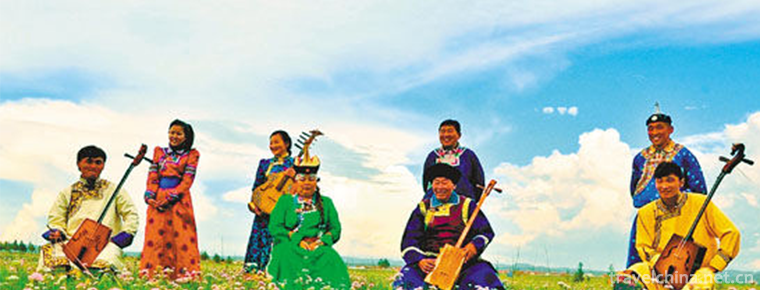
-
Jiaying Scenic Spot
Jiayingguan, commonly known as the Longwang Temple of the Yellow River, is located in Jiayingguan Township, Wuzhong County, Jiaozuo City, Henan Province, China.
Views: 118 Time 2019-01-21 -
Pingle Ancient Town
Pingle Ancient Town, located 93 kilometers southwest of Chengdu and 18 kilometers southwest of Qionglai City, is a famous historical and cultural town in China. .
Views: 165 Time 2019-02-07 -
Jingdong drum
Jingdong Drum is a traditional rap art originating in Sanhe, Xianghe, Pinggu and Baodi of Hebei Province. The main instruments, in addition to the singer's left hand with copper plate,.
Views: 105 Time 2019-05-07 -
Laoshan Folk Stories
Laoshan folk tales, commonly known as Lagua, are oral literature created by the local people of Laoshan Mountain in Shandong Province for thousands of years. There were few written records before libe.
Views: 115 Time 2019-05-11 -
Qiang sheepskin drum
Sheepskin drum dance, known as "Monasha", "Moldasha" or "Buzila" in Qiang language, is a kind of sacrificial dance performed by "Shibi" in legal activities, als.
Views: 173 Time 2019-06-10 -
Bronze Ware Making Skills Datong Copper Ware Making Skills
Datong bronze ware is a traditional handicraft of the Han nationality. It has a long history and exquisite craftsmanship. As early as the Northern Wei Dynasty, it enjoyed a great reputation. Since the.
Views: 145 Time 2019-06-21 -
Timago of Tujia Nationality
The Tujia Tima song, also known as the "Tujia Tima Goddess Song", is an ancient song sung in Tujia language in the activities of Tujia Tima. It mainly distributes in Longshan, Yongshun, Baoj.
Views: 278 Time 2019-06-23 -
Yongkang Drum Ci
Yongkang Drum Ci is a rap art in Yongkang area of Zhejiang Province. It belongs to the form of singing and talking, which is mainly composed of singing. Because of the use of local dialect performance.
Views: 295 Time 2019-07-14 -
Beijing University Of Technology
Founded in 1960, Beijing University of Technology is a multi-disciplinary municipal key university with a combination of engineering, science, economics, management, literature, law, art and education.
Views: 339 Time 2019-09-06 -
Fried meat with chili
Stir fried meat with chili is a dish made with chili and streaky pork as the main ingredients and soybeans, garlic seeds, soy sauce, oil salt, monosodium glutamate and ginger as auxiliary ingredients..
Views: 212 Time 2020-03-18 -
Leshan economy
In 2019, Leshan's GDP will reach 186.331 billion yuan, an increase of 7.6% over the previous year in terms of comparable prices. The industrial value increased by 24.288 billion yuan, with an increase of 24.288 billion yuan in the first value, and the second.
Views: 334 Time 2020-12-17 -
Leshan transportation
Leshan City has convenient transportation. In the 12th Five Year Plan, Leshan City proposed to implement the "100 billion yuan transportation project", including "two airlines (comprehensive development of Minjiang aviation and power and Leshan Airport).
Views: 349 Time 2020-12-17


